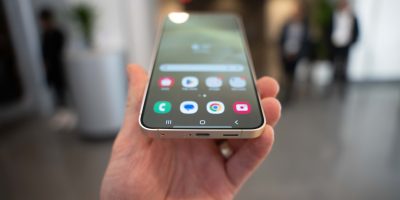 Huawei introduced their latest smartphone, the Huawei Honor 6 Plus, and it features some pretty neat features. The biggest of those features are dual cameras. Nothing innovative there, except both of the camera are on equal footing as they both sport 8 megapixel resolution. The sensors, while billed as 8 megapixels, are said to use a 1.85 “micron” pixel size, and with an onboard image processing chip they can quickly combine to take 13 megapixel stills of seemingly high quality.
Huawei introduced their latest smartphone, the Huawei Honor 6 Plus, and it features some pretty neat features. The biggest of those features are dual cameras. Nothing innovative there, except both of the camera are on equal footing as they both sport 8 megapixel resolution. The sensors, while billed as 8 megapixels, are said to use a 1.85 “micron” pixel size, and with an onboard image processing chip they can quickly combine to take 13 megapixel stills of seemingly high quality.
Also being touted here is the fact that the Huawei Honor 6 is the world’s first smartphone with variable aperture lenses. One of the sensors use f/2.0 aperture with autofocus (which Huawei says can focus on under 0.1 seconds) while the other is a fixed focus sensor at aperture f/2.4.
Just look at a collection of Huawei’s own camera samples that were supposedly taken with the device:
They look so good, it almost makes you wonder whether they gave these a bit of extra post-processing love. Even still, the sensor has to take the original photo and if there’s a way to get them to look like the samples shown above then that bodes well for folks who are longing for a serious camera experience on a smartphone.
Don’t let the camera’s brilliance detract from the clout the rest of the device boasts, though. The Huawei Honor 6 comes packed with a 5.5-inch 1080p display, a 1.8GHz octa-core Kirin 925 chipset, 3GB of RAM, 32GB of internal storage and a 3,600mAh battery. Even all of that isn’t the beefiest set of specs we’ve seen, but it should provide enough power to deliver an enjoyable time doing whatever it is you do on your smartphone.
Unfortunately it looks like this one won’t be easy to get your hands on if you’re outside of China. Huawei hasn’t announced plans for launching the device in North America or Europe, so getting one would likely require you to go through import channels. Early indication is that it’ll run you about $323 for a 3G-only model, while a 4G LTE version will be available for about $403.



















Stupid China-only handsets
Look at this phone. If it hits North America, Apple will go thermonuclear on them ;)
yup lol
Lol looking back at that threat it just seems so….. how do you say cute? All Apple managed to do was become a really annoying and expensive fly buzzing around yelling this is so unfair.
This is such the case with lots of the really great innovative stuff. Not USA friendly and sure as hell not VZW friendly. We get the same old same old.
This has been a LONG time coming. Microsoft showed off RAIC (Redundant Array of Independent Cameras) a decade ago.
It’s so easy to reduce noise when you can compare to shots taken at the exact same time. Let alone all the other fancy features you can do now.
That’s what I’m saying. Everyone is quick to dismiss dual-cameras as a gimmick, but if used correctly, it has some pretty dramatic benefits.
I call BS on those photos. They have been altered. The last one with the snowmobile was so crudely manipulated that objects on the same focal plane are not equally blurred/focused. Just look at the ground to the right of the snowmobile and compare it with the ground directly to the left. It’s one thing to process the image while taking the photo, but the blur was selectively added after the photo was taken presumably to exaggerate the aperture controls.
Also, did the optics on that camera forget to blur the left mountain peak?
It’s a lot of software-based manipulation as well. A lot like HTC’s Duo Camera setup.
Even so, if the source image was taken with the phone, it produces pics that are an awesome canvas to work from.
Post processing is part of a good photograph, but that’s not what defines a good photograph. Hardwarewise, you look at things like dynamic range, color accuracy, low light performance, high ISO performance, among other things including the photographer’s composition and ability to capture a photo appropriately. At any rate, it was inconsistently processed within the same image. That left mountain peak is an example.
Also, the snow behind the snowmobile’s windshield isn’t blurred even though it’s the same distance away as snow outside of the windshield that is pretty heavily blurred.
Definitely post processing.
I think they might wait to get there hands on some sort of snapdragon chipset and release a version for different markets in 2015
I love the concept of artificial depth of field,
Should make beautiful portraits